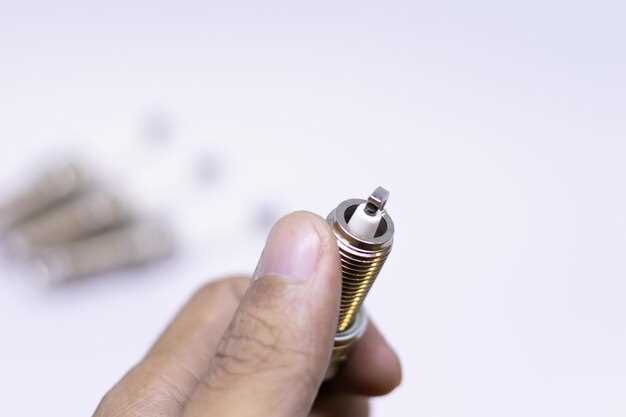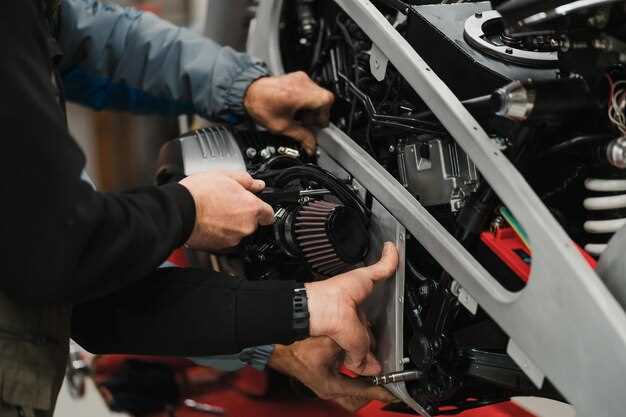
The performance of your engine heavily relies on the condition of its components, and spark plugs are among the most crucial. These small but mighty parts play a vital role in igniting the air-fuel mixture within the engine cylinders, thereby ensuring optimal combustion and performance. Over time, these plugs can wear out or become fouled, leading to misfires, reduced fuel efficiency, and an overall decline in engine performance. This makes understanding when and why to replace spark plugs a critical aspect of routine maintenance.
Regular tune-ups are essential for keeping your engine in top shape, and replacing spark plugs is a key component of this process. Knowing the right interval for replacing the plugs can vary based on the vehicle type, driving conditions, and the type of spark plugs used. Generally, it’s advisable to consult your vehicle’s owner manual for specific recommendations, but a good rule of thumb is to consider replacement every 30,000 to 100,000 miles, depending on these factors.
Failing to replace worn spark plugs can lead to bigger issues, including poor acceleration, increased emissions, and even potential engine damage. Keeping an eye on the performance of your vehicle and adhering to a regular maintenance schedule will ensure that your engine runs smoothly and efficiently, saving you both time and money in the long run.
Replacing Spark Plugs: Why It Matters and When to Do It

Replacing spark plugs is a crucial aspect of vehicle maintenance that should not be overlooked. Spark plugs play a vital role in the ignition process of an engine. They generate the electrical spark that ignites the air-fuel mixture, ensuring smooth engine operation. Neglecting to replace worn or faulty plugs can lead to various issues, including decreased fuel efficiency, engine misfires, and ultimately, costly repairs.
It is essential to recognize when spark plugs need to be replaced. Typically, manufacturers recommend changing them every 30,000 to 100,000 miles, depending on the type of plugs used and driving conditions. Signs that a tune-up is necessary include difficulty starting the engine, poor acceleration, and increased exhaust emissions. Regular inspection and timely replacement of spark plugs can contribute to optimal engine performance and longevity.
In conclusion, understanding the importance of spark plugs and their role in your vehicle’s performance can help you maintain its efficiency and health. Scheduling regular tune-ups and being aware of the warning signs associated with faulty plugs will keep your engine running smoothly and prevent more severe issues down the road.
Identifying Signs That Spark Plugs Need Replacement
Regular maintenance of your vehicle’s engine includes monitoring the condition of spark plugs. These essential components play a significant role in igniting the air-fuel mixture within the engine. Recognizing the signs that spark plugs need replacement can prevent engine performance issues and enhance fuel efficiency.
One of the first indicators of worn spark plugs is difficulty starting the engine. If you experience prolonged cranking or multiple attempts to start your vehicle, it may be a sign that the spark plugs are not functioning correctly. Another common symptom is rough idling; if the engine vibrates or shakes while at a stop, it may be due to misfiring spark plugs.
Fuel efficiency is also affected by the state of your spark plugs. If you notice a sudden increase in fuel consumption without a change in driving habits, failing plugs may be to blame. Additionally, pay attention to any unusual sounds from the engine, such as knocking or pinging, which could indicate incomplete combustion caused by damaged spark plugs.
Inspecting the spark plugs themselves can provide further insights. If you see signs of heavy carbon buildup, abnormal wear, or a burnt appearance, it is essential to replace them. Regular inspection during routine maintenance ensures that problems are detected early, ultimately prolonging the life of your engine and optimizing its performance.
Steps to Replace Spark Plugs Safely and Correctly

Replacing spark plugs is a vital part of engine maintenance and plays a significant role in keeping your vehicle running efficiently. Follow these steps to ensure a safe and effective replacement process:
-
Gather Necessary Tools and Materials:
- New spark plugs
- Torque wrench
- Socket wrench with the appropriate size socket
- Spark plug gap gauge
- Dielectric grease (optional)
- Shop towels or rag
-
Prepare the Engine:
- Park the vehicle on a level surface.
- Ensure the engine is cool to prevent burns.
- Disconnect the negative battery terminal to eliminate electrical hazards.
-
Access the Spark Plugs:
- Locate the spark plugs, typically found on top or side of the engine block.
- Remove any components obstructing access, such as ignition coils or covers.
-
Remove Old Spark Plugs:
- Carefully detach the spark plug wire or ignition coil from each spark plug.
- Using the socket wrench, loosen and remove the old spark plugs.
- Inspect the removed plugs for signs of wear or damage.
-
Check and Adjust Gap on New Spark Plugs:
- Use a spark plug gap gauge to check the gap according to manufacturer specifications.
- Gently adjust the gap if necessary to ensure optimal performance.
-
Install New Spark Plugs:
- Apply a small amount of dielectric grease to the threads (optional).
- Carefully insert and hand-tighten the new spark plugs into the engine.
- Use the torque wrench to tighten the plugs to the recommended torque specification.
-
Reconnect Components:
- Reattach the ignition coils or spark plug wires.
- Replace any covers or components removed earlier.
-
Test the Engine:
- Reconnect the negative battery terminal.
- Start the engine and listen for smooth operation.
- Check for any warning lights or irregular sounds.
Following these steps not only ensures your engine runs more smoothly but also prolongs its life. Regularly replacing spark plugs is essential as part of comprehensive tune-up procedures for your vehicle.
Linking Spark Plug Maintenance to Overall Engine Performance
Maintaining spark plugs is a crucial aspect of ensuring optimal engine performance. Spark plugs play a vital role in igniting the air-fuel mixture within the combustion chamber, directly influencing combustion efficiency. When plugs become worn or fouled, they can lead to incomplete combustion, resulting in reduced power output and increased fuel consumption.
Regular tune-ups often include spark plug inspection and replacement, which is essential for keeping the engine running smoothly. Ignoring this maintenance can result in erratic engine performance, misfires, and increased emissions. Properly functioning spark plugs contribute to a cleaner engine, promoting longevity and better efficiency.
A well-maintained set of spark plugs can significantly enhance throttle response and overall acceleration. In contrast, worn plugs can lead to rough idling and sluggish performance, frustrating the driver and potentially causing more extensive engine issues over time. Therefore, keeping spark plugs in good condition is vital for not only immediate performance but also for the long-term health of the engine.
Overall, including spark plug maintenance in your vehicle’s regular service schedule is key to achieving peak engine performance. By ensuring your plugs are replaced at the recommended intervals, you contribute to a smoother, more efficient driving experience while safeguarding the engine’s integrity.





